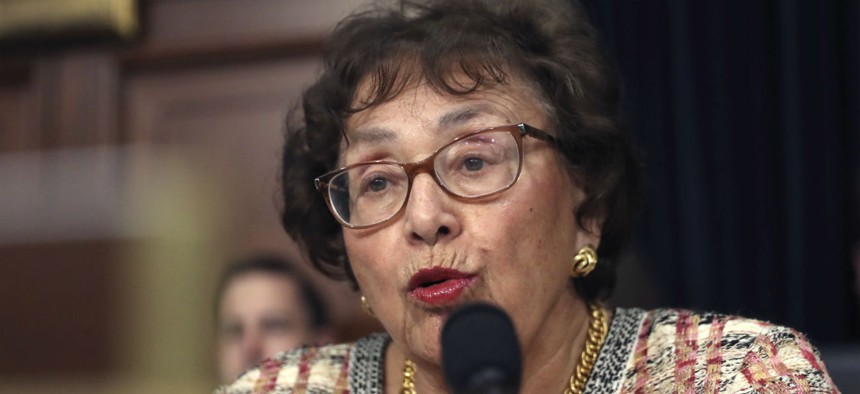
Rep. Nita Lowey, D-N.Y., told reporters that congressional leaders have agreed to the Dec. 20 end date for the new continuing resolution. Andrew Harnik/AP
Congress Expects to Pass Another Stopgap Spending Bill to Keep Agencies Open Through Dec. 20
Lawmakers hope to pass full-year appropriations before the new deadline and avoid another holiday season shutdown.
Lawmakers plan to kick the deadline to keep agencies open to Dec. 20, using a second stopgap spending bill to avert a shutdown later this month.
Congressional leaders have agreed to that end date for another continuing resolution as negotiators seek an agreement on full-year appropriations, Rep. Nita Lowey, D-N.Y., who chairs the House Appropriations Committee, told reporters on Tuesday. Current funding runs through Nov. 21, and lawmakers hope the additional month will provide sufficient time to reach a resolution on the line-by-line funding for each federal agency.
The House is expected to take up the CR next week, setting up a tight timeline for passage. The White House has indicated President Trump will sign the measure, as long as it does not attempt to block the construction of barriers along the U.S.-Mexico border.
The timing will also coincide with potential votes on Trump’s impeachment on the House floor. Lowey announced the new stopgap’s expected expiration after meeting with her Senate counterpart, Sen. Richard Shelby, R-Ala. Appropriations leaders previously speculated the stopgap would last into February or March, but have bumped up the timeline in hopes of avoiding more CRs later in the year. Most federal agencies are in line for spending bumps over the fiscal 2019 levels thanks to a budget deal Trump signed into law earlier this year.
“I remain hopeful that we can finish our work and fully fund the government before the end of the year,” House Majority Leader Rep. Steny Hoyer, D-Md., said last week.
The Senate has easily approved a package of appropriations measures to fund the departments of Transportation, Housing and Urban Development, Agriculture, Interior, Commerce, Justice and other agencies. The chamber, however, rejected a second “minibus” that included funding for the departments of Defense, Health and Human Services, and Labor due to Democratic concerns over wall funding and other issues. The House has approved 10 of the 12 annual appropriations measures, largely along party lines.
In the coming weeks, congressional leaders hope to set allocations for each of the 12 spending bills lawmakers must pass annually. Once those funding levels are set, appropriators can attempt complete the work of writing each bill and resolving the remaining sticking points.







